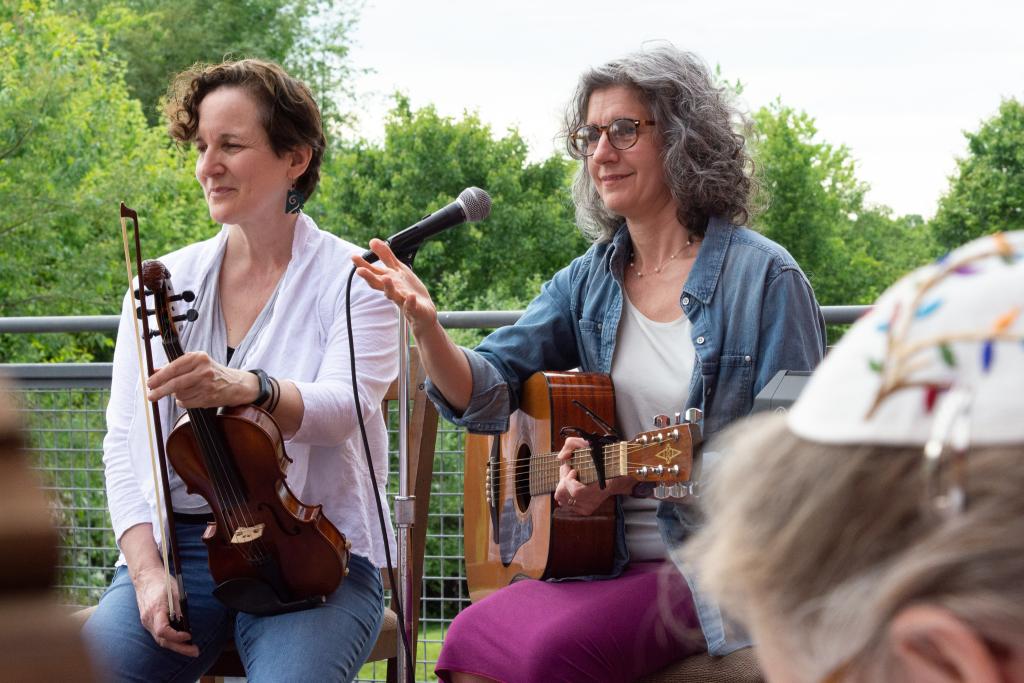

Entering Sh’vat — The Time of Our Liberation (?) of Receiving Torah (?)
אין מוקדם ומאוחר בתורה There is no earlier or later in the Torah – midrashic principle*
Does anybody really know what time it is? – Robert Lamm of “Chicago”
We now enter the Hebrew month of Sh’vat, which begins on Monday, January 27 this year. If the Hebrew months are mostly known for the holidays they contain, Sh’vat is the month on whose 15th day is the Jewish new year for trees, Tu (15th) B’Sh’vat. If there was ever a time in human history that we needed the wisdom of a Jewish holiday directing our attention to the cycles of nature as they are manifested by the lives of trees, this must be it. The devastating images of burned Amazonian forests and the more recent scourge of fires in Australia leave us with more existential angst than ever. The chance to celebrate the life-affirming sap now rising in healthy trees around us is a welcome tonic. May our winter tree celebrations strengthen our resolve to address the overwhelming climate challenges we face as a planet. At the risk of practicing denial in the face of this singular crisis, I want to focus my thoughts this month on the complex relationship between the Jewish calendar and the Torah reading cycle and some of the questions that relationship places before us.
During Sh’vat, the Torah reading cycle will bring us through two of the most seminal moments in our sacred mythology: 1) leaving Egypt and 2) standing at Sinai. As many have taught before, these twin narratives (read this year on February 8 and February 15, respectively) are the beloved literary presentation of two essential human themes: freedom and responsibility. With the crossing of the sea, we are brought from slavery to freedom and with the giving of the 10 Commandments, we are compelled into covenant. These are the two passages in the Torah for which the community stands during the reading, as if to say, we’re in it in real time. We’re dancing with Miriam on the far shore of the sea, trembling with Aaron and everyone at the foot of Mt. Sinai. And, hearing these texts, we can’t help but think of Pesach, at least, and also Shavuot. It always feels a bit incongruous, celebrating the crossing of the sea in our synagogue readings in Sh’vat (January or February) and yet gathering for seder in Nisan (April) and, likewise, the reading of the 10 Commandments, again, Sh’vat, (February) and yet the holiday which celebrates this covenantal moment in late spring (Nisan, April).
The holiday cycle, of course, is based on the realities of our farming ancestors who first established festivals according to the rhythms of planting and harvesting. Once the long diaspora began with the Roman destruction of Jerusalem, land-based holidays were harder for the exiled Jewish communities to uphold. The early rabbis responded by linking those agricultural festivals with these central themes in our Torah narrative. Pesach became not so much the festival of spring planting as the “time of our liberation” – זמן חרותנו (z’man cherutenu) and Shavuot, likewise, not necessarily the festival of the barley harvest, but now, the “time of the giving of our Torah” – זמן מתן תורתנו (z’man matan Toratenu). This gave us a much more portable religious calendar for a people living all over the place, outside the Land of Israel, whose stories must now hold them together across these distances of time and space.
Some are familiar with the time-honored principle of Torah exegesis: there is no before or after in the Torah. This was an early rabbinic response to the conundrum of explaining those passages in the Torah which defy linear logic. For example, does the golden calf episode come before the 10 commandments or after it? You get a different answer depending on the reader. “The principle אין מוקדם ומאוחר [no early or late in the Torah] suggests that while chronology is the most frequent criterion for the organization of Torah material, often we must search for other, non-chronological criteria that give meaning to the order or juxtaposition of texts in the Torah.” According to Dr. Isaac Gottlieb in www.thetorah.com. The final answer must be: it’s all happening all the time. Redemption is an ongoing process, not a one-time historical event. Revelation is possible at all times, if we’re truly present to the moment. At the Seder table, we’re taught, “in every generation, each of us must look upon ourselves as if we ourselves came out from Egypt.” This teaching stands the test of time because it is true: each of us has, is and will again come out from places of oppression, constriction, even suffering, to find our voice, claim our independence, and discover the intrinsic lines of connection and responsibility we share in community. The power of our sacred myth, our Torah, is that it gives us, in the month of Sh’vat, in the month of Nisan, and many other times, a shared language through which to understand our own ongoing redemptions and our own ongoing revelations. Chodesh tov – May it be a good month!
*first articulated in Mekhilta Shirata, a commentary on the Song of the Sea, likely dated to mishnaic, ca. 2nd cent. CE
Copyright © 2025 Adat Shalom Reconstructionist Congregation. All rights reserved.